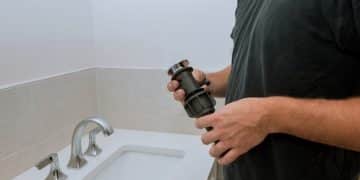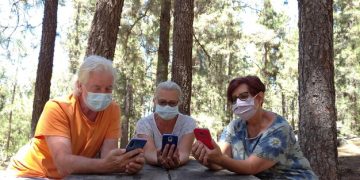Is Your Roof Ready for 2025? 7 Replacement Signs
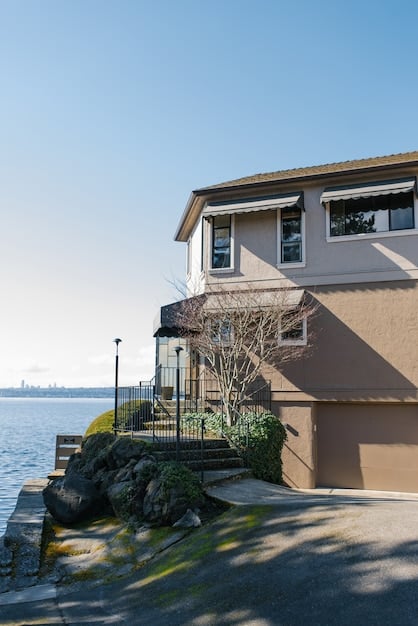
Is Your Roof Ready for 2025? As we approach 2025, homeowners should inspect their roofs for signs of wear and tear such as leaks, damaged shingles, and granule loss to avoid costly repairs and maintain the integrity of their home.
Is your home’s roof prepared to weather the storms of 2025? Years of sun, rain, and wind can take a significant toll, and knowing when to replace your roof is crucial for protecting your investment. Let’s explore seven key indicators to help you determine if it’s time for a new roof before 2025 arrives, safeguarding your home from potential damage with Is Your Roof Ready for 2025? 7 Signs You Need a Replacement Now.
Evaluate your roof’s lifespan
Understanding the expected lifespan of your current roof is a foundational step in determining its readiness for 2025. Different roofing materials have varying lifespans, which can be affected by environmental conditions and maintenance levels. This knowledge is key in planning for potential replacements.
Material Lifespan
The type of material used for your roof greatly impacts its lifespan. Asphalt shingles, for example, typically last 15-20 years, while tile or metal roofs can last much longer, often exceeding 50 years. Knowing what your roof is made of will help you gauge how much life it has left.
Environmental Impact
Harsh weather conditions, such as intense sun exposure, frequent heavy rain, or severe temperature fluctuations, can accelerate the aging process of roofing materials. Coastal areas with salty air can also cause corrosion in metal roofs. Consider the environmental factors in your area when evaluating your roof’s lifespan.
- Check installation date: Find records of when the roof was installed to estimate its age accurately, or seek professional advice to assess the roof’s condition if records are unavailable.
- Consider material warranty: Review the warranty of your roofing material for insights into its expected lifespan.
- Assess local weather effects: Note how local weather patterns might affect the lifespan of your specific roofing material.
In conclusion, gauging Is Your Roof Ready for 2025? 7 Signs You Need a Replacement Now begins with a solid understanding of your roof’s material and the environmental factors it faces. Determining these aspects will give you a clearer picture of whether a replacement is needed soon.
Spotting shingle damage
Damaged shingles are among the most visible signs that your roof might be failing and may need attention before 2025. Regular inspections can help you identify common problems early, preventing more serious issues down the road.
Cracks and Breaks
Look for shingles that are cracked, broken, or missing. These issues can create direct pathways for water to enter your home, leading to leaks and structural damage. Use binoculars from the ground or conduct a closer inspection if you can safely access your roof.
Curling and Buckling
Shingles that are curling up at the edges or buckling in the middle are signs that they are deteriorating. This often happens as shingles age and lose their protective coatings. These deformities can affect how well your roof sheds water.
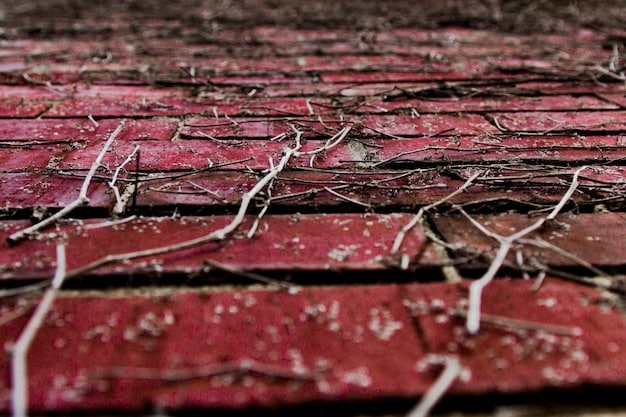
- Check after storms: After severe weather, inspect your roof for displaced or damaged shingles.
- Look for debris buildup: Clear away any debris, like leaves and branches, that can trap moisture and accelerate shingle damage.
- Hire professional inspection: Consider a professional roof inspection for a thorough assessment of shingle condition.
To summarize, identifying shingle damage early is vital for maintaining the integrity of your roof. Keeping an eye out for cracks, breaks, and deformities can help you determine if Is Your Roof Ready for 2025? 7 Signs You Need a Replacement Now, potentially saving you from costly repairs.
Granule loss assessment
Granule loss is a key indicator of roof wear that often leads to decreased protection against the elements. Understanding and assessing this loss is crucial for evaluating how well your roof can hold up through 2025.
What Are Granules For?
Granules are the small, colored mineral particles that cover asphalt shingles. They protect the asphalt from direct sunlight, which can cause it to dry out and crack. They also add weight to the shingles, helping them stay in place, and provide aesthetic appeal. Visible granule loss indicates that the shingle is losing its protective layer.
Signs of Granule Loss
One of the easiest ways to spot granule loss is to check your gutters and downspouts. If you notice a large amount of granules accumulating there, it’s a sign that your shingles are shedding their coating. You might also see bald spots on your shingles where the asphalt is exposed.
- Check for bald spots: Regularly check the roof surface for areas where the granules have worn away, exposing the shingle base.
- Monitor gutter buildup: Clean your gutters and monitor the amount of granules collected; a significant increase is cause for concern.
- Compare shingle appearance: Look at shingles on different parts of the roof; variations in granule presence indicate uneven wear.
In conclusion, assessing granule loss is an essential aspect of maintaining Is Your Roof Ready for 2025? 7 Signs You Need a Replacement Now. Regular checks can help you catch early signs of wear, potentially prolonging your roof’s life with timely interventions.
Checking for roof leaks
Roof leaks are a serious concern that require immediate attention to prevent extensive damage to your home. Detecting and addressing leaks proactively is crucial in ensuring Is Your Roof Ready for 2025? 7 Signs You Need a Replacement Now effectively, safeguarding against costly repairs.
Interior Signs of Leaks
One of the first places to check for roof leaks is inside your home. Look for water stains on your ceilings and walls, especially after rainfall. These stains may appear as brown or yellowish spots and can indicate water seeping through the roof structure. Another sign is peeling paint or bubbling wallpaper, which can be caused by moisture accumulation behind the surfaces.
Exterior Signs of Leaks
On the exterior, inspect your roof for signs of damage around vents, chimneys, and skylights. These are common areas where leaks can occur due to improper sealing or wear over time. Also, check for missing or damaged shingles, which can expose the underlayment to water intrusion.
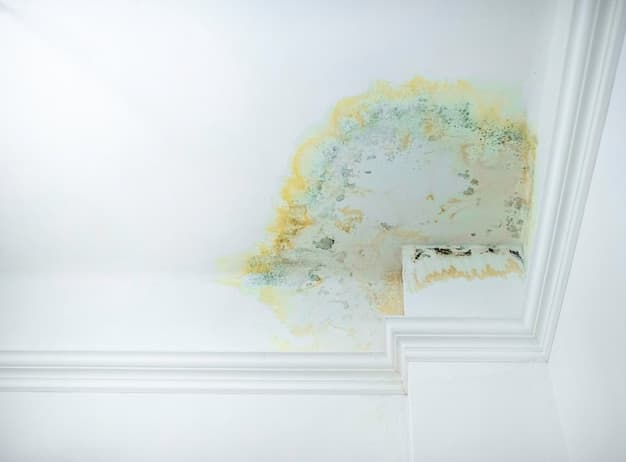
- Inspect attic spaces: Check your attic for water stains, mold, or mildew, which are clear indicators of roof leaks.
- Look for daylight penetration: In a dark attic, look for spots where daylight shines through the roof, indicating potential leak points.
- Evaluate flashing: Examine the flashing around chimneys, vents, and skylights for damage or deterioration.
In summary, checking for roof leaks involves careful monitoring of both interior and exterior signs. Addressing issues early can save you from extensive water damage and ensure Is Your Roof Ready for 2025? 7 Signs You Need a Replacement Now for years to come.
Assessing the condition of flashing
Flashing, often an overlooked component of roofing, plays a pivotal role in preventing water intrusion around critical areas like chimneys and vents. Assessing its condition is vital to ensuring your roof is prepared for 2025.
What is Flashing?
Flashing consists of thin pieces of metal, such as aluminum or steel, installed to create a water-resistant barrier. It’s typically found around any roof feature that interrupts the roof’s surface, including chimneys, skylights, vents, and valleys. The primary function of flashing is to prevent water from seeping into these vulnerable areas.
Signs of Flashing Deterioration
Look for signs such as rust, cracks, or bends in the flashing material. These can compromise its ability to keep water out. Additionally, check the sealant around the flashing to ensure it’s intact and hasn’t dried out or cracked. Damaged or improperly sealed flashing can lead to leaks, which can cause significant damage to your home’s structure over time.
- Inspect after storms: After severe weather events, check the flashing for any signs of damage or displacement.
- Check for rust: Look for rust, which can compromise flashing integrity and lead to leaks.
- Examine sealant: Ensure that the sealant around the flashing is intact and hasn’t cracked or dried out.
In conclusion, regularly assessing the condition of your roof’s flashing is essential for maintaining its watertight integrity and determining Is Your Roof Ready for 2025? 7 Signs You Need a Replacement Now. Ensuring that it’s in good repair can prevent many potential roofing issues.
Checking for moss or algae growth
Moss and algae growth on roofs can indicate underlying moisture issues and potential deterioration. Identifying and managing this growth is key to keeping Is Your Roof Ready for 2025? 7 Signs You Need a Replacement Now effectively.
Why is Moss and Algae Harmful?
Moss and algae thrive in damp, shaded environments, making roofs an ideal breeding ground. While they may seem harmless, these organisms can retain moisture against the roof’s surface, leading to decay and granule loss. Over time, this can weaken shingles and reduce their ability to protect your home from the elements.
Identifying Moss and Algae
Moss typically appears as a green, carpet-like growth, while algae often presents as dark stains or streaks on your shingles. These growths are most common on the north-facing slopes of roofs, where sunlight is limited. Regular visual inspections can help you spot these issues early.
- Trim overhanging branches: Cut back tree branches that overhang your roof to reduce shade and moisture buildup.
- Use moss-killing solutions: Apply appropriate moss and algae killing solutions to prevent their harmful growth.
- Consider professional cleaning: Hire a professional roof cleaner to safely remove growths and prevent damage to the shingles.
In summary, checking your roof for moss or algae growth and taking steps to manage it can prolong its lifespan and ensure it can withstand the elements effectively. Prevention and early intervention are key for Is Your Roof Ready for 2025? 7 Signs You Need a Replacement Now.
Consider Professional Roof Inspection
While homeowners can perform basic roof inspections, a professional assessment offers a more thorough and reliable evaluation. Professional roofers can identify subtle issues that might go unnoticed, providing a comprehensive overview of your roof’s condition.
Benefits of a Professional Inspection
Professional roof inspections involve a detailed examination of all aspects of your roof, including shingles, flashing, underlayment, and structural components. Roofers use specialized tools and techniques to identify potential problems, such as hidden leaks, damaged flashing, and deteriorated shingles. They can also provide an accurate estimate of the remaining lifespan of your roof.
When to Get a Professional Inspection
It’s advisable to schedule a professional roof inspection every one to two years, or after any significant weather event, such as a severe storm, heavy snowfall, or strong winds. Regular inspections can help detect issues early, preventing extensive damage and costly repairs.
- Check credentials: Verify that the roofing contractor is licensed and insured.
- Ask for detailed reports: Request a written report outlining the inspector’s findings and recommendations.
- Get multiple quotes: Compare quotes from different contractors to ensure you’re getting a fair price for any necessary repairs or replacements.
In conclusion, enlisting the expertise of a professional roofer for regular inspections is a proactive approach to maintaining the integrity of your roof and ensuring Is Your Roof Ready for 2025? 7 Signs You Need a Replacement Now. Their comprehensive assessment can provide peace of mind and help protect your investment.
| Key Indicator | Brief Description |
|---|---|
| 📅 Lifespan Evaluation | Assess material age and environmental impacts. |
| 💔 Shingle Damage | Look for cracks, breaks, curling, and buckling. |
| 🍂 Granule Loss | Check gutters and shingles for granule accumulation. |
| 💧 Roof Leaks | Watch for interior stains and exterior damage around vents. |
Frequently Asked Questions
▼
It’s recommended to inspect your roof at least twice a year, typically in the spring and fall. Additionally, check your roof after any severe weather events, such as storms or heavy snow.
▼
Common signs include missing or damaged shingles, leaks, granule loss, curling or buckling shingles, and moss or algae growth. Interior signs of leaks, such as water stains, are also a concern.
▼
Minor repairs, such as replacing a few shingles, can often be done yourself if you’re comfortable and have the necessary skills. However, for significant damage or complex repairs, hiring a professional roofer is recommended.
▼
The duration of a roof replacement can vary depending on the size and complexity of the roof, weather conditions, and the roofer’s schedule. Typically, a roof replacement can take between 1 to 5 days to complete.
▼
The cost of a roof replacement depends on factors such as the roofing material, roof size, complexity, and labor rates. Asphalt shingles typically range from $5,000 to $12,000, while other materials, like metal, can cost significantly more.
Conclusion
Preparing your roof for 2025 involves regular inspections, addressing damages promptly, and considering professional assessments. By staying vigilant and proactive, you can ensure your roof provides reliable protection for years to come.

